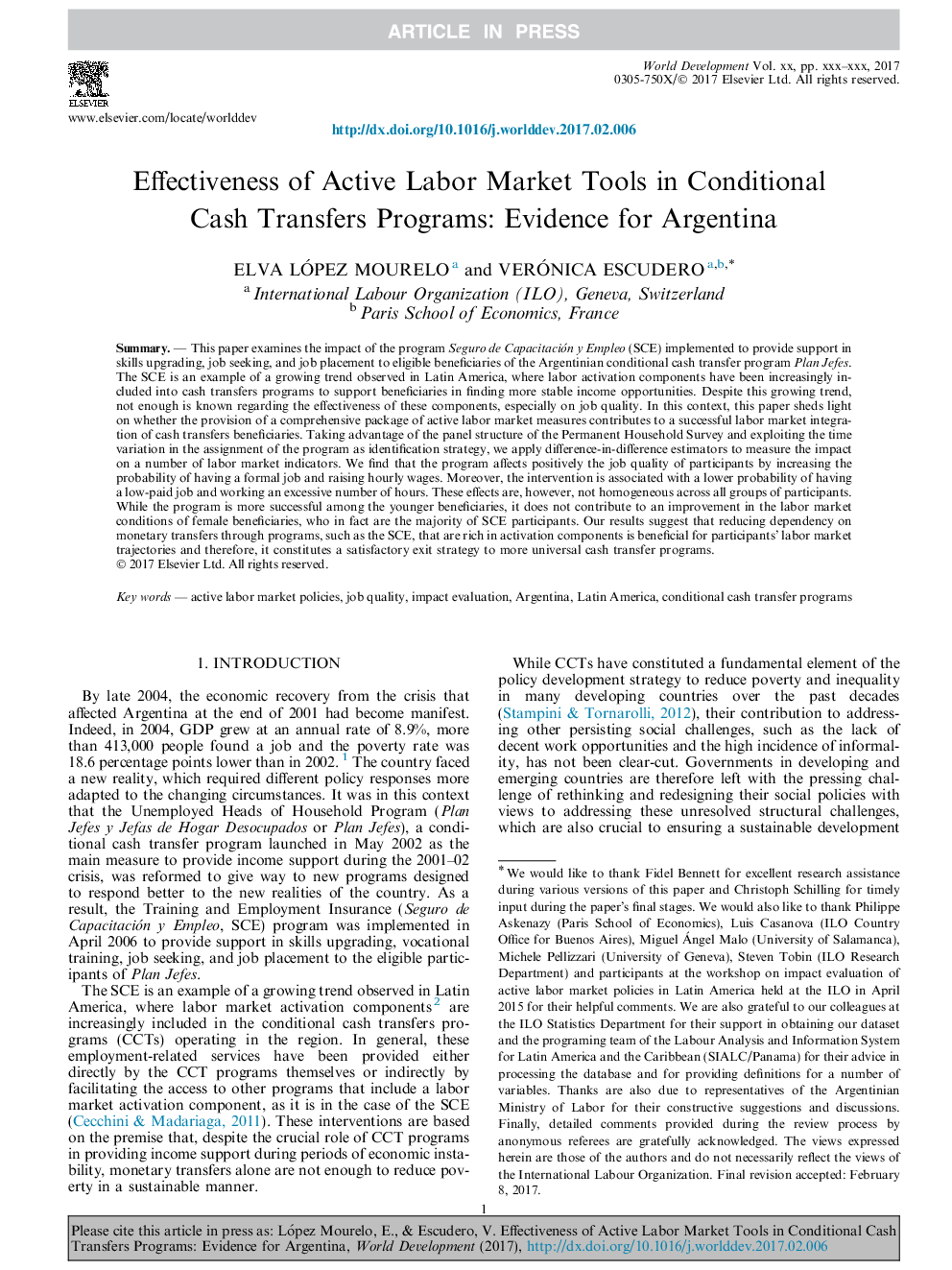ترجمه فارسی عنوان مقاله
اثربخشی ابزارهای بازار کار فعال در برنامه های انتقال اساسی مشروط: شواهد برای آرژانتین
عنوان انگلیسی
Effectiveness of Active Labor Market Tools in Conditional Cash Transfers Programs: Evidence for Argentina
| کد مقاله | سال انتشار | تعداد صفحات مقاله انگلیسی |
|---|---|---|
| 102017 | 2017 | 26 صفحه PDF |
منبع

Publisher : Elsevier - Science Direct (الزویر - ساینس دایرکت)
Journal : World Development, Volume 94, June 2017, Pages 422-447
ترجمه کلمات کلیدی
سیاست های بازار کار فعال کیفیت کار، ارزیابی تاثیر، آرژانتین، آمریکای لاتین، برنامه انتقال پولی مشروط،
کلمات کلیدی انگلیسی
active labor market policies; job quality; impact evaluation; Argentina; Latin America; conditional cash transfer programs;

